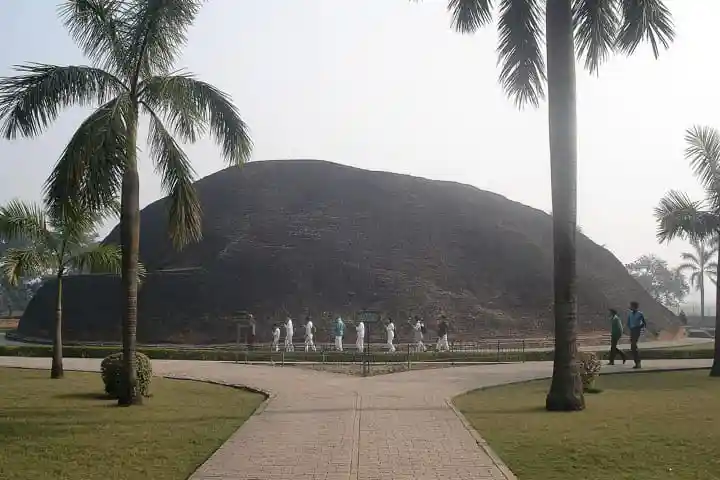Kushinagar a town in Uttar Pradesh district by the same name is in news as Prime Minister Narendra Modi is scheduled to inaugurate an international airport there on October 20.
This town has historical and religious significance as it occupies a prime place among the international Buddhist pilgrimage centres being the final resting place of Lord Buddha – it is here he attained Mahaparinirvana after his death. Believers of Buddha, including those from neighbouring countries like Sri Lanka, China, and Bhutan, throng this place, as it a must pilgrim centre for practicing Buddhists to visit it during their lifetime.
According to an article in livehistoryindia.com Buddhist tradition specifies that the Siddharth did not die but attained mahaparinirvana – the ultimate state of nirvana. The religious scriptures state that Buddha lay down on his right side with his right hand placed under his head as he passed away silently and peacefully. These details are part of the Mahaparinirvana Sutta of the Digha Nikaya – a part of the Sutta Pitaka – one of the three baskets of Theravada Buddhist faith.

Gautama Buddha statue in Parinirvana at the Mahaparinirvana Temple
The present day and modern Theravāda has been derived from the Sri Lankan branch of the Vibhajjavāda tradition called the Mahāvihāra order. The former is a sect of the Indian Sthavira Nikaya.
Established from 3rd Century BCE onwards in Sri Lanka, it was here that the Pāli Canon was written down and the school's commentary literature developed. Subsequently, the Theravāda Mahāvihāra tradition moved to other parts of Southeast Asia becoming the dominant religion in not just Sri Lanka but also Cambodia, Laos, Myanmar, and Thailand. It is also practiced by minorities in India, Bangladesh, China, Nepal, and Vietnam.
According to livehistory.com around 485 BCE, after eating a meal prepared by a blacksmith Chunda, Buddha realised that his end is near. He told his favourite disciple, Ananda, that following his passing away, Chunda was not to be blamed. Also that there should be only four places where Buddha should be remembered by disciples and among them were Lumbini, where he was born, Bodh Gaya where he attained enlightenment, Sarnath where he gave his first sermon and Kushinagar where he passed away.
Located less than 150 kilometres from Lumbini, in Nepal, during Buddha’s time this region was called Kushavati and was the Capital of the tribal kingdom of the Mallas. Interestingly, the name Kushavati comes from kusha grass which Buddha favoured for making his meditation seats and thus it continues to be revered even today.
Kushinagar boasts of several important stupas including the Parinirvana Stupa with the reclining Nirvana statue of Buddha made of monolith red sandstone; Nirvana Chaitya situated behind Main Parinirvana Temple excavated in 1876; and Ramabhar Stupa the cremation place of Buddha. Among the other places of attraction is the Indo-Japan-Sri Lanka temple, a marvel of Buddhist architectural grandeur.
Also Read: India, Sri Lanka to take ties to the next level with inauguration of Kushinagar airport




















